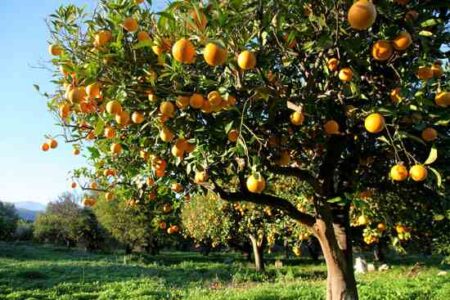The leaves and tiny lavender-blue flowers of anise hyssop (Agastache foeniculum)smell and taste of anise, but its square stems and opposite leaves tell you it belongs to a different family entirely, the Lamiaceae (Labiatae), or mint family. The leaves look a bit like catnip, another mint-family member, but larger. Herb lovers claim it as a culinary herb, using the fresh or dried leaves in tea and crumbling the tangy flowers over fruit salad — but the wildflower books list it as a native wildflower of north-central North America. And though it’s called hyssop, it’s not the hyssop, Hyssopus officinalis, a blue-, pink- or white-flowered European member of the mint family traditionally used as a healing herb.
An herbaceous perennial hardy in Zones 4 to 9, the upright anise hyssop reaches 2 to 4 feet in height and about 1 foot across. In the wild, the season of bloom is from June to September; in the garden, count on flowers in late summer. The 4- to 6-inch dense spikes of small, two-lipped flowers are variously characterized as purple, dusky dull indigo-violet, blue and violet-blue. Bees love the flowers, and so do herb crafters, as blossoms retain their fragrance and color when dried.
Anise hyssop is a handsome addition to the back of the perennial border. It has been recommended as a worthy companion to Japanese anemones, but it would be equally attractive with other softly colored or white ornamentals such as companulas, or with herbs such as garlic chives, oregano and thymes.
Anise hyssop is easily grown from seed, either by starting indoors as you would tomatoes or by sprinkling outside in spring or fall. Fall-planted seed will remain dormant and then sprout in the spring; this is the way mature plants sow their seed, after all. Your established anise hyssop will produce plenty of volunteer plants for you to share with friends or use to expand your planting. Fortunately, they’re extremely easy to transplant. Plantings can be increased by root division, too.
This plant is easy to care for. It will thrive in full sun in well-drained garden soil — good news for the dry-land gardener.
If you know where wild plants of this species grow, you can gather seed from them; otherwise, you can order seeds or plants from the sources listed below. If you’ve grown anise hyssop for years and would like to try something new, Thompson & Morgan offers seeds of ‘Fragrant Delight’ agastache hybrids. Their catalog describes it as “Wonderfully fragrant foliage and each flower color, blue, yellow, red, pink and white has a separate fragrance from peppermint to spearmint and one distinctly aniseed or liquorice.
Sources
• Veseys, P.O. Box 9000, Charlottetown, PE Canada C1A 8K6; (800) 363-7333; www.veseys.com.
• Blossom Farm, 34515 Capel Rd., Columbia Station, OH 44028; www.blossomfarm.com.
• DeGiorgi Seed Company, 6011 N. St., Omaha, NE 68117; (402) 731-1132; www.degiorgiseed.com.
• Kitchen Garden Seeds, 23 Tulip Dr., Bantam, CT 06750; (860) 567-6086; www.kitchengardenseeds.com.
• Thompson & Morgan Seedsmen Inc., P.O. Box 1308, Jackson, NJ 08527; (800) 274-7333; www.thompsonmorgan.com/seeds/us/.







